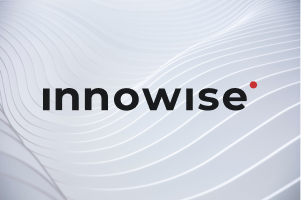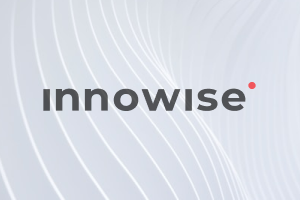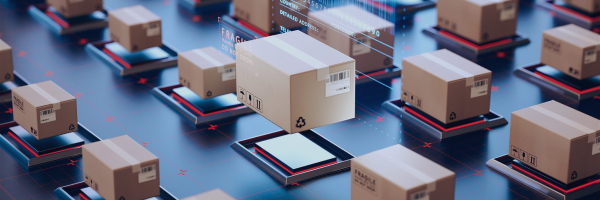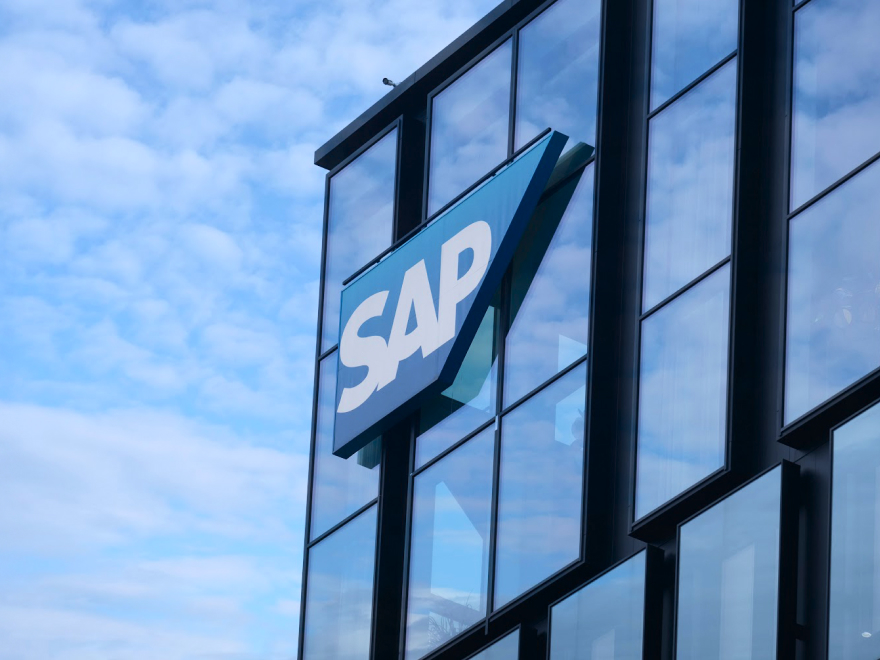Uw bericht is verzonden.
We verwerken je aanvraag en nemen zo snel mogelijk contact met je op.
Het formulier is succesvol verzonden.
Meer informatie vindt u in uw mailbox.



Productie is geen sinecure - ik heb met eigen ogen gezien hoe de toenemende vraag naar efficiëntie en flexibiliteit bedrijven tot het uiterste kan drijven. En laten we eerlijk zijn, vasthouden aan verouderde processen? Dat is een recept voor frustratie, inefficiëntie en gemiste kansen. Ik heb met bedrijven gewerkt die worstelden met knelpunten, chaos in de toeleveringsketen en vertragingen in de productie. Totdat ze ERP omarmden.
Dat is waar ERP-software voor productie het spel verandert. Het is niet zomaar een hulpmiddel; het is de ruggengraat van een moderne, gestroomlijnde bedrijfsvoering. Mijn team en ik hebben bedrijven geholpen ERP te integreren om de productie te optimaliseren, kosten te besparen en de productiviteit te verhogen op manieren die ze zich nooit hadden kunnen voorstellen. In dit artikel laat ik je zien hoe ERP je productiebedrijf kan transformeren en je klaarstoomt voor succes op lange termijn.
Klaar om uw activiteiten klaar te maken voor de toekomst? Laten we er eens in duiken.
De vraag naar ERP in de productie is omhooggeschoten, en ik heb uit de eerste hand gezien hoe bedrijven - groot en klein - deze systemen omarmen om concurrerend te blijven. Volgens Technology Evolution Centers, 50% van de bedrijven zijn aan het kopen, upgraden of van plan om binnenkort ERP-systemen te updaten.
De markt zelf is booming. Industrie rapporten voorspellen dat de wereldwijde ERP-markt zal groeien van $71.62 miljard in 2025 tot $114.09 miljard in 2030, met een 9.76% CAGR. Waarom? Omdat fabrikanten onder constante druk staan om hun middelen te optimaliseren, de coördinatie te verbeteren en de kosten te verlagen terwijl ze blijven voldoen aan de eisen van de markt.
Productie domineert de ERP-ruimte, goed voor 25,7% van de wereldmarkt. Het beheren van complexe toeleveringsketens, het zorgen voor een naadloze productie en het behouden van de operationele efficiëntie zijn topprioriteiten - gebieden waar ERP heeft bewezen een game changer te zijn.
ERP voor de productie-industrie integreert kritieke bedrijfsfuncties om u te helpen uw activiteiten te optimaliseren, de efficiëntie te verhogen en geld te besparen. Hier volgt een overzicht van de belangrijkste functies die het verschil maken.














"ERP-systemen zijn meer dan alleen een hulpmiddel - ze zijn een belangrijk onderdeel om concurrerend te blijven, vooral als we het hebben over ERP voor de productie-industrie, waar snelheid, precisie en efficiëntie het belangrijkst zijn. Bij Innowise helpen we bedrijven ERP-oplossingen te implementeren die de productie stroomlijnen, de zichtbaarheid van de toeleveringsketen verbeteren en datagestuurde inzichten bieden voor slimmere besluitvorming."

Michael Labutin
Hoofd ERP-afdeling
We bieden een end-to-end ERP-systeemimplementatie, waarbij we bedrijven door het hele proces begeleiden, van de eerste planning tot de volledige implementatie. Onze experts maken oplossingen op maat die voldoen aan de unieke behoeften van uw productieactiviteiten om vanaf dag één een soepele integratie en optimale functionaliteit te garanderen.
Innowise vergemakkelijkt de naadloze overdracht van uw bedrijfskritische gegevens van oudere systemen naar het nieuwe ERP-platform. Wij geven prioriteit aan de integriteit en nauwkeurigheid van gegevens en minimaliseren de downtime. Tegelijkertijd zorgen we ervoor dat alle informatie toegankelijk en overzichtelijk blijft in het nieuwe systeem.
We bieden voortdurende ondersteuning om ervoor te zorgen dat uw ERP-systeem optimaal functioneert. Van het oplossen van problemen tot systeemupdates en -verbeteringen, ons team is altijd beschikbaar om problemen snel op te lossen en ervoor te zorgen dat uw activiteiten soepel blijven verlopen, zodat u zich kunt aanpassen aan veranderende bedrijfsbehoeften.
We bieden trainingssessies op maat om je team uit te rusten met de vaardigheden om je nieuwe ERP-systeem effectief te gebruiken. We bieden aangepaste trainingssessies om alle gebruikers, van basis tot gevorderd, te helpen het systeem te begrijpen en het volledige potentieel te benutten voor maximale productiviteit.
Wij helpen uw bedrijfsworkflows te automatiseren om de efficiëntie te verbeteren en handmatige fouten te verminderen. Onze ERP-oplossingen stroomlijnen taken zoals orderverwerking, voorraadbeheer en financiële rapportage, zodat uw team zich kan richten op de meer strategische aspecten van het bedrijf en tegelijkertijd consistentie en nauwkeurigheid kan garanderen.
We ontwikkelen business intelligence (BI) en rapportageoplossingen op maat van uw productieactiviteiten. Ons team helpt bij het maken van aanpasbare dashboards, geautomatiseerde rapporten en voorspellende analyses, waardoor gegevensgestuurde beslissingen mogelijk worden die de efficiëntie, productiviteit en winstgevendheid verhogen.
Wij ontwikkelen cloud-gebaseerde ERP-oplossingen die flexibiliteit, schaalbaarheid en externe toegang bieden. Met cloud ERP kunnen uw productieactiviteiten soepel verlopen zonder dat er dure infrastructuur nodig is. Het biedt altijd en overal realtime toegang tot gegevens en maakt naadloze samenwerking tussen teams mogelijk.
Als je bestaande ERP-systeem verbeteringen of extra functies nodig heeft, bieden onze verbeteringsservices de perfecte oplossing. We analyseren uw huidige installatie, identificeren hiaten en implementeren upgrades die aansluiten op uw veranderende bedrijfsbehoeften, waardoor de functionaliteit en efficiëntie van uw ERP-systeem worden verbeterd.
Optimaliseer uw productieactiviteiten met ERP-oplossingen van de volgende generatie
Ik heb samengewerkt met een aantal fabrikanten die Microsoft Dynamics 365 het is een krachtige ERP-oplossing, maar niet echt plug-and-play. Waar het echt in uitblinkt, is wanneer je diepgaande integratie tussen afdelingen nodig hebt en je al gebruikmaakt van Microsoft-tools zoals Office 365, Teams en Power BI.
Wat het onderscheidt is hoe nauw het productieoperaties verbindt met verkoop, financiën en service. Je kunt in hetzelfde dashboard van vraagprognoses naar supply chain-plannen gaan, waarbij AI onderweg suggesties doet. Met de productiemodule kun je bijvoorbeeld BOM's, routing en resourceplanning beheren met ingebouwde automatisering, niet als een aparte uitbreiding.
Een van mijn favoriete onderdelen? Je kunt Power BI rapporten rechtstreeks in je ERP schermen ophalen. Ik heb teams de rapportagetijd met meer dan 60% zien verkorten door onhandige Excel-exports te vervangen door live dashboards.
Het meest geschikt voor grote en middelgrote fabrikanten met complexe activiteiten die behoefte hebben aan volledig inzicht in processen, realtime gegevens en soepele samenwerking tussen teams, vooral als ze al vertrouwen op Microsoft-tools.
Als u op zoek bent naar flexibiliteit zonder uw IT-budget uit te putten, Odoo is moeilijk te verslaan. Het is een veel lichter alternatief voor systemen als Dynamics 365 of SAP S/4HANA, en dankzij het open-source karakter blijft zelfs de betaalde versie behoorlijk budgetvriendelijk.
Wat Odoo echt bijzonder maakt, is hoe modulair het is. Je kunt klein beginnen - inventaris, MRP, verkoop - en meer modules toevoegen naarmate je bedrijf groeit. Je hoeft niet te veel te betalen voor dingen die je nog niet gebruikt.
Natuurlijk is het niet perfect uit de doos. Geavanceerde functies zoals voorspellend onderhoud of superspecifieke workflows betekenen meestal dat je apps van derden moet gebruiken of dat er wat maatwerk nodig is. Maar met de juiste technische partner kun je de flexibiliteit van Odoo precies afstemmen op wat jouw fabriek nodig heeft.
Ideaal voor kleine en middelgrote fabrikanten die een kosteneffectieve en aanpasbare ERP-oplossing nodig hebben met uitgebreide aanpassingsmogelijkheden
SAP S/4HANA is niet zomaar een ERP-systeem; het is een volwaardig commandocentrum voor fabrikanten die jongleren met meerdere fabrieken, internationale operaties en duizend bewegende delen in de toeleveringsketen. Het verwerkt belastingregels voor meerdere landen, meerdere valuta en intercompany logistiek op één plek. De in-memory engine houdt enorme gegevenssets snel in beweging, zodat je niet vastloopt.
Stel dat u fabrieken hebt in de VS, Duitsland en China. Met S/4HANA kunt u materialen in realtime volgen van leverancier naar fabriek naar klant. Als een zending vertraagd is, markeert het systeem dit onmiddellijk en geeft het uw team de informatie die ze nodig hebben om snel te handelen. U krijgt ook tools voor voorspellend onderhoud, zodat machines worden onderhouden voordat ze defect raken, niet erna.
Natuurlijk heeft al die vuurkracht een prijs, letterlijk en operationeel. Implementatie kost tijd, maatwerk vereist meestal gecertificeerde SAP partners en uw team heeft serieuze training nodig.
Het meest geschikt voor grote productiebedrijven die een allesomvattende ERP nodig hebben met uitgebreide aanpassingsmogelijkheden, automatisering en ondersteuning op bedrijfsniveau.
Oplossingen voor Enterprise Resource Planning veranderen alles voor bedrijven die voorop willen blijven lopen in de snelle markt van vandaag. Deze systemen doen meer dan activiteiten verbeteren - ze maken ze efficiënter en meer verbonden. Door belangrijke processen te integreren, brengt ERP real-time gegevens, automatisering en naadloze coördinatie naar elke afdeling.
Het resultaat? Een flexibeler, efficiënter en concurrerender bedrijf dat klaar is om alle uitdagingen aan te gaan:













Productie op dit moment kan het voelen als jongleren met honderd dingen tegelijk. Strakke deadlines, verrassingen in de toeleveringsketen, stijgende kosten en een non-stop druk om sneller te gaan zonder fouten. Ik heb teams gezien die zich hebben ingegraven in spreadsheets, het overzicht over voorraden kwijtraken of constant bezig zijn met het oplossen van productievertragingen. Klinkt dat bekend?
Dat is waar een ERP om de hoek komt kijken. Het koppelt je hele bedrijf aan elkaar zodat alles soepeler, sneller en met veel minder stress verloopt. Productieplanning wordt eenvoudiger, voorraden worden automatisch bijgewerkt, bestellingen worden sneller verwerkt en rapporten bouwen zichzelf op. Het belangrijkste is dat je team eindelijk realtime gegevens krijgt om betere beslissingen te nemen zonder giswerk.
Natuurlijk, het is geen toverstafje dat elk probleem oplost. Maar het geeft je een kans om de controle te houden wanneer alles om je heen blijft veranderen. En dat is tegenwoordig al een hele overwinning.
ERP-systemen bieden verschillende belangrijke voordelen voor fabrikanten:
Het proces van het integreren van een enterprise resource planning systeem met bestaande systemen omvat meestal:
De implementatietijdlijn voor een ERP-systeem in de productie-industrie varieert op basis van verschillende factoren, waaronder de complexiteit van de bedrijfsprocessen, de grootte van de organisatie en de gekozen ERP-oplossing. Gemiddeld kan een ERP-implementatie tussen 3 tot 12 maanden. Dit omvat tijd voor planning, systeemconfiguratie, testen, training en gegevensmigratie. Grote, complexe organisaties hebben mogelijk meer tijd nodig voor een soepele en effectieve implementatie.
Dmitry leidt de technische strategie achter aangepaste oplossingen die echt werken voor klanten - nu en wanneer ze groeien. Hij combineert visie met praktische uitvoering en zorgt ervoor dat elke build slim, schaalbaar en afgestemd op het bedrijf is.












Uw bericht is verzonden.
We verwerken je aanvraag en nemen zo snel mogelijk contact met je op.

Door u aan te melden gaat u akkoord met onze Privacybeleidmet inbegrip van het gebruik van cookies en de overdracht van uw persoonlijke gegevens.